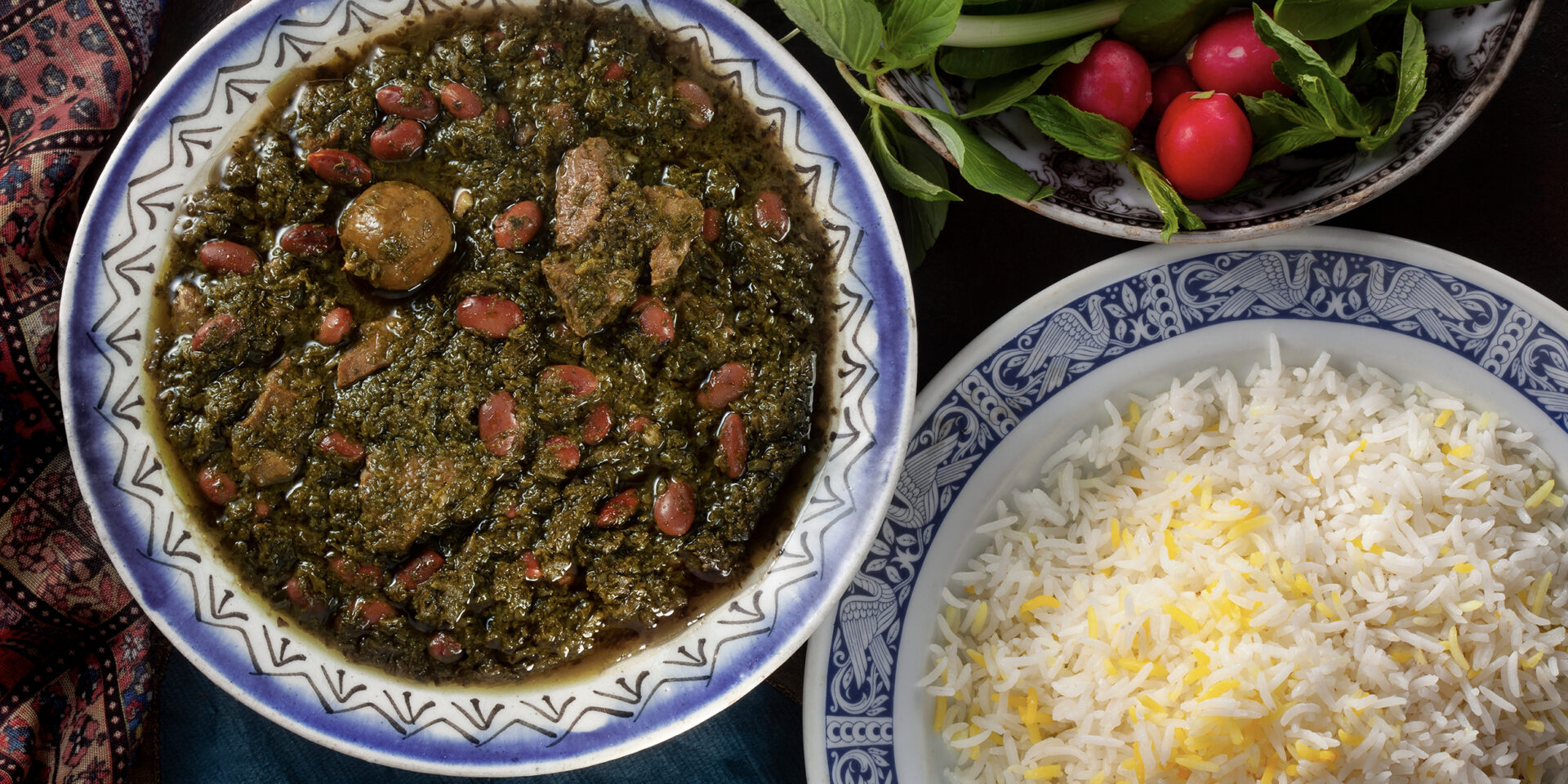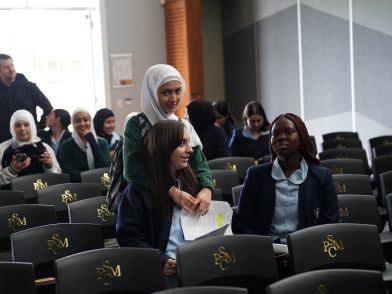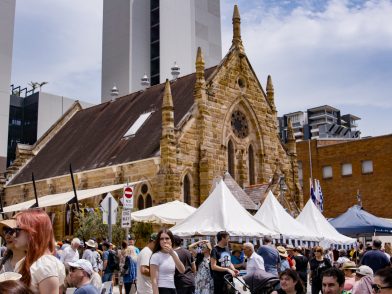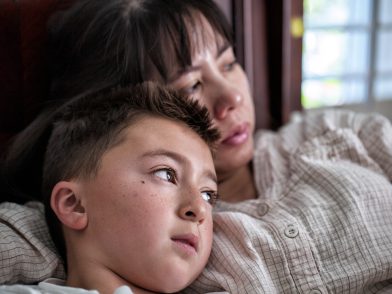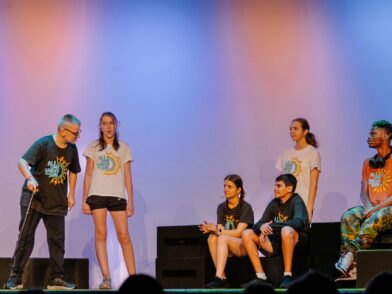“You’re not Iranian. You’re Australian, you were born here”.
My grandfather said these words before explaining something about a soccer match between Iran and Australia. He looked grumpy, but I think it was just the endless lines and dips across his saggy cheeks. My grandpa had a resting grumpy face, but it didn’t speak for the natural kindness of his heart. This soccer game was the first match of its kind between Iran and Australia since the late 90s (before I was even born). A boghz arose in me, that ‘lump-in-your-throat’ feeling close to impossible to shake off and punched my uvula.
The boghz enlarged itself on its own terms as my grandmother called the family into the kitchen. She had just served her weekly Friday night feast and that night’s speciality, ghormeh sabzi, was letting off a fresh scent, as though I was standing in front of the herb seller at Flemington Markets. Dinner was accompanied by the spicy white onions and radishes that the adults loved to chomp on with every spoonful of rice. My grandfather had started to approach the dinner table in our cramped kitchen. I, however, remained stuck, seated cross-legged on the ornate rug that had been my brother and I’s playground for as long as I could remember. Eventually, I approached the kitchen and sat down as quietly as I could at the table. Tears welled in my eyes, but I was careful to not let any of them out and into the salty ghormeh sabzi. My grandfather has planted a seed of doubt in the centre of my heart. Whether that heart belonged on the Iranian side of the football stadium, however, was an entirely different matter.
“You’re not Iranian. You’re Australian, you were born here”.
In all honesty, I don’t know what cultural identity is.
It is so full of contradictions, so individually distinct for each and every person, that a one-size-fits-all definition cannot help everyone. In general, cultural identity refers to the ‘parts’ of a person that are tied to a social group. According to National Geographic this may be on the basis of gender, religion and/or class, but here I refer to cultural identity as the culture(s) that come from a certain ethnicity or race, or more likely those cultures that we inherit from belonging to a certain ethnicity or race. We inherit these from our ancestors, we inherit these from our living families, and we continue to pass down this inheritance to our own descendants. Inheritance from said social group, in this case an ethnic or racial one, is evidently implied. Nevertheless, this explanation is still ‘general’, in the sense that debate – both discursive and academic – on the subject continues to run ripe with disagreement and difference. It seems to be close to impossible to find one united stance on the meaning of cultural identity that any and all can agree on.
If there’s one thing I can take away from this general definition, one that I find works quite well at putting my own mind at ease, it is the concept of inheritance. It takes a lot of work to unearth what exactly is inherited and how that inheritance manifests in your everyday life.
Take Marjan, for example. Marjan migrated to Melbourne, Australia in 1977 as a young woman of 23.
She was accompanied by her husband, Sepher, both of whom worked as restauranteurs across Tehran. Marjan and Sepher wanted to bring Iranian cuisine to a western market that had not been exposed to their homeland’s delicacies before. However, after moving with their two children, they soon came to realise that Australian society was only newly multicultural. Less than two decades prior, the White Australia Policy had slowly started to be phased out and had only been dismantled in 1973. As such, Marjan struggled to keep the flame of her cultural identity alive – both in setting up a restaurant in Melbourne but also within her family. She only spoke English to her children so that they would never struggle with the language like she did. Eventually, the family lost contact with the Farsi language. While Marjan’s children, Baha and Safar, identify as Iranian and follow a lot of traditions and customs, they cannot speak Farsi beyond the odd greeting or two. They cannot pass down the language.
On the other hand, Omar was born in Perth to an Anglo-Celtic father whose ancestors arrived on the First Fleet and to a Persian mother who fled Iran with her family as asylum seekers after the Islamic revolution. Omar, now thirty-four, was always surrounded by both sides of his family when growing up. When with his mother’s Iranian relatives, Omar learnt and spoke Farsi, practiced the Baháʼí Faith (the religion of his maternal relatives since its inception in early nineteenth century Iran). He would even recite Persian poetry with his grandparents. Omar went as far as disobeying his father in his youth when instructed to only speak English in front of him; his father wanted to be included in dinner-table conversation. Instead, he only spoke Farsi at home (unless he forgot a word or two!) to encourage his father to learn the language as well as to keep his own abilities up to scratch. Omar and his family choose to identify as Persian when asked about their cultural identity, an intentional political choice that steers clear of modern negative perceptions of Iran and instead evokes the triumphs of an ancient civilisation. He doesn’t have children of his own yet, but Omar intends to raise them in a similar fashion to his own upbringing.
Lastly, Aria is an Italian- and Iranian- Australian. His heritage can be traced back to his maternal family arriving in Adelaide from Italy after World War Two. His paternal side were political refugees from Iran who used to work in the court of the Shah pre-revolution. They arrived in Australia in 1981. Aria, meaning ‘song’ or ‘melody’ in Italian and ‘noble’ or ‘relating to the Aryans’ in Farsi, was chosen as his name by his parents as a way of honouring his mixed-heritage. However, Aria’s parents and family did not prioritise upholding cultural traditions or practices. Growing up, Aria felt ‘Australian’ for most of his life and didn’t think much of his Italian or Iranian roots. After the death of his last grandparent, Aria, at the age of fifty-one, took it upon himself to explore his cultural identity by networking with Italian and Iranian groups. He now actively involves his own children in the practices and beliefs they are learning about side by side. He is adamant his children don’t make the same mistakes he did.
These scenarios, while only miniscule in depicting the range of possibilities and factors that can influence cultural identity for diasporas in a white-majority country, articulate what we should really mean when we say ‘complexity’. Ultimately, there are countless deterrents and enhancers when it comes to connection and contentment with cultural identity.
For me, this inheritance manifests in the way I place my left hand on my heart and slightly bow my head as I shake hands with someone. It pops up in my mind when I think of the months of March and December as being the festive season of Nowruz and Yalda respectively. It comes alive anytime I meet someone who has inherited the title ‘Iranian’ in some way, shape or form, or even when I meet someone from another ethnic or racial group who wishes to compare and contrast its features with mine. And perhaps most obviously, it manifests with my grandfather anytime he speaks of the West and the ways in which it contributed to the downfall of the Middle East, and more regrettably, his former homeland.
Tears welled in my eyes, but I was careful to not let any of them out and into the salty ghormeh sabzi. My grandfather has planted a seed of doubt in the centre of my heart.
When it was my fifteenth birthday, a time in which one matures according to the Baháʼí Faith, my grandfather asked me to sit next to him as he held a stuffed, tattered envelope.
In 2021, 7 million of Australia’s population, that is 27.6% identified as being born overseas and by extension, recorded themselves as first-generation immigrants in the Australian Census.
But cultural identity is more than just a number or statement. It is an intangible, twisted thing, one that is constantly reconfiguring itself as the individual responsible for it grows into their own skin. Nevertheless, these statistics are gross generalisations intending to speak for and represent as many people as possible. Sometimes, for the sake of convenience and logistics, these generalisations have to exist. But when looking at the lived histories that have come to fruition in this nation as well as the lives of current Australians who are ‘history-in-the-making’, that pesky adjective – complex -, becomes quintessential in describing cultural identity in Australia.
Its contents: cash. Bank notes from a pre-revolution Iran, ranging in size, colour, currency and condition. “When I’m dead”, he said, “the rest will be yours too. Take care of these for now. They’re more than special; they’ll be worth millions one day when you get the chance to return to a free land”. He took my hands, hands that had grown to almost match his in size and appearance, and placed the envelope in them. He took a new, crisp envelope, and asked me to transfer the notes to keep them as my own.
This allowed me to embrace and actively define my hyphenated existence; an Iranian-Australian who was born and raised in Australia but has active connections with his Iranian heritage.
This story was supported by Diversity Arts Australia’s StoryCasters program in partnership with The New Point Magazine. The views expressed within this story do not necessarily reflect the views of Multicultural NSW.

